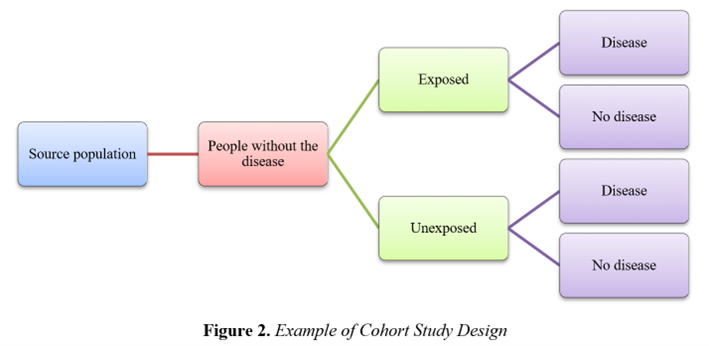Information

Cohort studies are a type of analytic studies used to test the hypotheses about cause-and-effect relationships. The term ’cohort’ is defined as a group of people, usually comprising 100 or more people who share a common characteristic or experience within a specified period of time (e.g. age, occupation, exposure to a medicine or vaccine, citizenship, etc.). A cohort is divided into 2 parts – those exposed to the supposed risk factor, and those who are not (e.g. smokers and non-smokers). Then the cohort is observed over a certain period of time in order to find out the incidence of death or disease development (which are supposed to be caused by the exposure to the present risk factor), and at the end of the observation period, the comparison between the incidence of death and illness in the exposed and unexposed participants is performed.
Cohort studies are an important method of medical research, convenient for the identifiction of the causes of a disease, because groups of people are observed before they develop a disease. It means that researchers can examine whether there is a cause-and-effect relationship between the participants’ selected way of life and their health (Figure 2).
The ongoing Millenium cohort study is following the lives of 19,000 babies born in Great Britain between 2000 and 2001 in order to demonstrate how circumstances in the very first stages of life can influence later health and development. In addition to collecting the data about the health of these babies and their parents, the study is examining the behaviour and cognitive development of the children, as well as a number of other social factors.

The design of a cohort study is shown in the following table:

Among the exposed: IR = a/(a+b)
Among the unexposed: IR = c/(c+d)
An IR is the indicator of the occurence of an illness in the exposed and unexposed cohort members over the total period of time.
[a/(a+b)]/[c/(c+d)] or a(c+d)/c(a+b)
The relative risk shows the incidence of an event in the exposed over that in the unexposed individuals.
The attributable risk shows the probability of disease prevention provided there is an effective measure of eliminating the exposure.